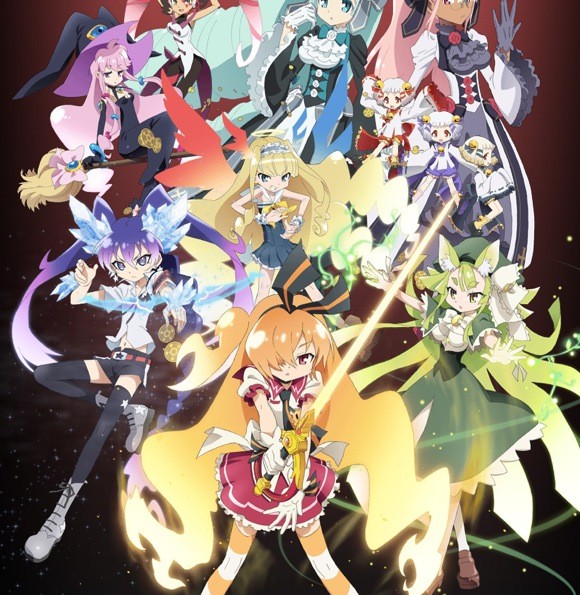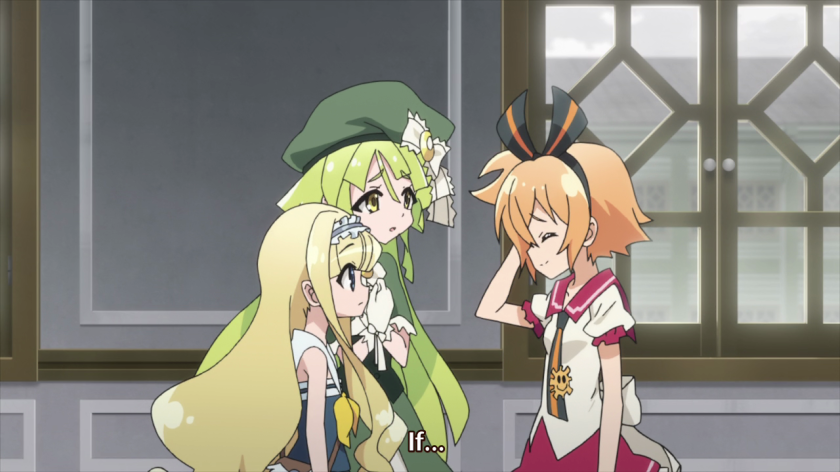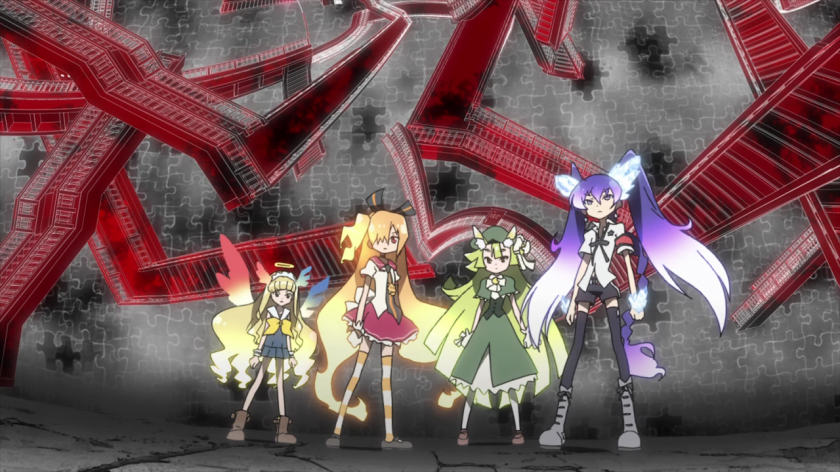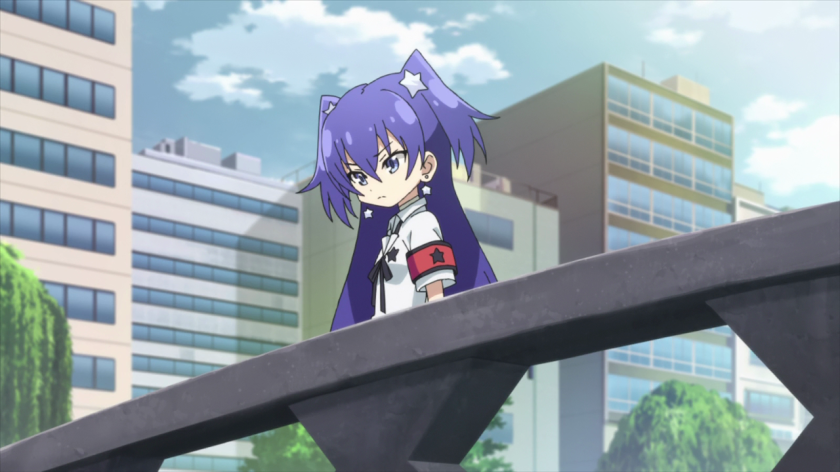
Horror comes from inside and is directed inside. People who want to kill us are quite scary, but they’re a very specific problem. True horror is in realizing that we can be the killers, that we can be what we hate. It throws a big wrench in our grand narrative and shatters it to pieces. That’s why we limit our consciousness, assume the patriarchy or the media or the government is to blame for it all. Negative feelings are bad, but the true problem must be outside us.
Obvious comparisons to Madoka spring up, but these are superficial comparisons. The latter is more existential and philosophical, less concerned with the emotions of its characters and relying more on structure and mechanics to deliver its philosophical idea. Daybreak Illusion is far more emotional, fantastical and wild. Each character has distinct demeanor, it has many arcs which peek into other people’s lives and the main subject matter is emotion, not the grand meaning of life.

With that aside, let’s focus on what’s actually going on here, something deeper than how ‘logical’ the story is. Cliched stories that flood your cinema have an external evil. These are comfortable fantasies. The bad is always outside of us. We need to kill it. Some of them improve and we can converse with these evil, but it’s still outside. The third stage is recognizing something inside of us is evil, but an external thing brings it out. The fourth, and most horrifying stage, is realizing that each of us partakes in the conspiracy against the human race.
Daybreak Illusion belongs in the third category, which is a weird one. Stories that reach there are aware of theme exploration, that their story shouldn’t just give us a good time with pretty visuals. You can’t reach that stage without trying to be deep. The anime really wants to be more, not just a copy of Madoka but to compete against it and expand on the genre. It does that fine enough, but not good enough.

Daemonia are the big evil, but they’re amplifiers of already-present negative emotions. Yet by pushing the source of the bad outside, the series isolates it and doesn’t explore their issues too deeply. Many of the characters become ‘not themselves’ when the Daemonia take over, but that’s just avoiding the horror. The horror is realizing that the bad side is just as a part of ourselves as the good side.
The series is always close to truly delving into the depths of emotion, but never getting there. A climatic conflict does it the best, showing how we’re responsible to each other. Main character finds herself needing to actually face another person’s emotions, and digging inside of her to find out what she really feels. It’s an interesting position to put the main character in, but it doesn’t solve the big conflict. All ends with a big Final Boss Fight full of flashing lights and explosions.
In the most of the arcs though, the victims are just innocent people who are tempted by the devil. By the time they start their rampage, they’re supposedly ‘not themselves’. The escape from horror isn’t deliberate. Our heroes talk to the Daemonia and are frigthened by the fact that these are people. In a way, by showing us that these distorted monsters are still actually human beings, we’re supposed to be all the more horrified by our negative feelings. Yet this doesn’t work, since these Daemonia too end up too alien from us, their cause being external. People transform into monsters because something infected them, not because they made decisions (or were born in environments) that turned them into monsters.

For the characters in the story these people are real enough, even when they come looking like man-eating plants. What it does better than Madoka is showing the journey and emotional development of heroes caught in the midst of a cosmic battle. Characters actually have a will and their reactions to the events. If in the first episodes the anime seems aimless, it’s only because it really tells the story of these girls and nothing else. Any time the story loses its direction is when it sways from it.
Although these characters aren’t particularly deep, they’re given distinct views about the battle, the world and what they get from it. In the first few episodes the anime actually threatens to improve on Madoka, since it’s far more in touch with what kind of dilemmas and conflicts would arise in this situation. Of course it uses Monster of the Week format, because anything else is a distraction. At its most exciting, we see them clashing and arguing and talking about what they’re going through. How it feels like to be the hero is where the excitement lies.
The drop in quality comes later. Suddenly we get a more rigid structure and a main villain. Already in the beginning we had some meaningless technobabble, but it avoided getting technical. Battle ended when there was no emotions left to explore in that conflict. The final conflict also ends thanks to the heroes reaching a conclusion, deciding to rebel against their own fate. Yet we don’t actually see them reaching this conclusion.

A trait of messy anime, especially those with huge epic stories and wacky art styles is that they have a slew of themes and they don’t know which one to focus on, or even which one fit their structure. First the anime start with exploring how negative emotions get the best of us, how the evil is supposed to be inside of us. Then this is thrown away, not completely resolved and instead out of nowhere the girls are fighting against fate.
Now, if the series had something to say about emotional determinism it would be fine. Exploring the conflict of will and choice is the next big thing, since so far we all agree we can’t control our emotions. The whole idea of fate comes from the Tarot, though, not because the series wanted to explore it in the first place. Messy structures tend to arise naturally from theme-focused anime, but here it’s because the show couldn’t focus on its ideas.
At least on the surface it works well enough. As a simple heroic story, I’d take this over many others. Even if its exploration is shallow, it gains from it enough emotional weight. These battles matter. We see the characters going through something during these moments of violence and how their psyche is affected. It’s not just ‘beat up those deamons and get some shwarma’. It hasn’t reached the heights it’s aiming for, but it’s still an exciting story with great visuals. For some, that’s enough.
3 daemonia out of 5





